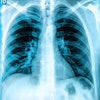
The U.K. Royal College of Radiologists (RCR) has released new guidelines about vetting, triaging, and canceling unnecessary requests for imaging. The aim is to reduce waste and radiation exposure and ensure all examinations are appropriate.
"Vetting and protocolling of radiology referrals remain a means for ensuring the correct investigation is performed and correct scan protocols are applied," noted Dr. Neelam Dugar, chair of the RCR's Radiology Informatics Committee and a member of AuntMinnieEurope.com's editorial advisory board, and her colleagues.
 Dr. Neelam Dugar from Doncaster, U.K.
Dr. Neelam Dugar from Doncaster, U.K."Efficient technology to support the workflow is necessary to make vetting and cancellation effective. This requires robust and effective ways to communicate the cancellation reason to the referrer -- whether by electronic or paper means," they continued. "Formal vetting processes are particularly valuable in complex and high radiation dose examinations."
In addition to ensuring the efficient operation of the radiology department, review of imaging requests provides an opportunity to share informative feedback with the referrer indicating why a request has not been sanctioned. Thus, an effective vetting service depends on good communication, the authors wrote in the 10-page document.
Key role of radiologists
Performing inappropriate imaging examinations puts a huge cost burden on the National Health Service (NHS), and if the exams involve ionizing radiation, they can add to the patient's radiation burden, which may be illegal under Ionising Radiation (Medical Exposure) Regulations.
Radiologists have a central role to play in reducing waste because they understand referral pathways and diagnostic tests for most conditions. They are also aware of the most appropriate imaging modalities for specific presentations and in specific age groups, taking into account previous investigations. Through their involvement in multidisciplinary team meetings, radiologists can align investigations with clinician preference for the mode of imaging.
"Radiologists are becoming more patient facing and this will increase further with rapid-access diagnostic centres and one-stop imaging/biopsy/clinical pathways," stated Dugar and her colleagues. "In their reports, radiologists provide not only a diagnosis or appropriate differentials but also advice on further imaging. This will become more important with diagnostics having become the first step in many patient pathways."
Due to cumbersome, time-consuming processes for vetting and canceling inappropriate requests, some radiology departments are unwilling to involve staff in vetting processes. In addition, the vetting workload often lacks recognition as a clinical task, and there is no national benchmarking of vetting activity. Improving vetting and cancellation workflow processes within radiology information systems would certainly reduce the departmental workload.
Input from radiographers
Modality-based radiographers usually perform vetting and protocolling for CT, MRI, and ultrasound requests, but in the case of complex/specialist imaging, vetting is likely to be undertaken by a radiologist/special interest radiologist to ensure the most appropriate test.
"Vetting should be recognized as an important value-added task," the authors noted. "Radiographers are comfortable to cancel exams when a duplicate request is made but often find it difficult to challenge inappropriate requests on clinical grounds. Good teamworking in departments is required to optimize the vetting and protocolling workflow."
Vetting should be added as an item in terms of productivity calculations for radiologists and radiographers, and radiographers involved in vetting complex examinations should receive appropriate training.
Sound guidance
Ensuring the appropriate investigation has been requested through the review of imaging requests is an extremely important but often underrecognized role of the radiologist, and this expert review prevents unnecessary radiation and inappropriate and duplicate examinations, as well as makes the overall delivery of radiological services both safer and more efficient, wrote Prof. Mark Callaway, the RCR's medical director for professional practice, in the foreword to the document.
The review of imaging requests provides an opportunity to share informative feedback with the referrer indicating why a request has not been sanctioned, he explained.
"This document sets the standards for a robust method of vetting and communicating with the referrer and defines how to maximize the effectiveness of the process in the most efficient manner. It also illustrates how a decision-support tool such as iRefer can be incorporated into this process," Callaway pointed out.
To support the implementation of the advice set out in this guidance, a sample radiology information system specification for the vetting and protocolling workflow is included as an appendix, along with audit templates so that departments can review the effectiveness of the workflows.
The document can be downloaded free-of-charge from the RCR website.



















